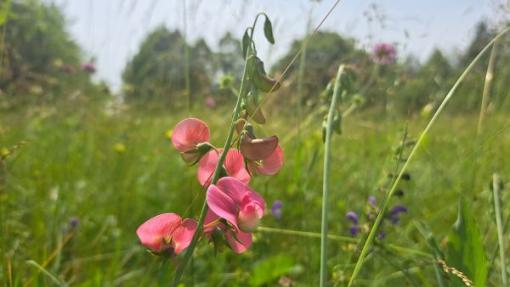Are you up for a walk through one of the most biodiverse areas in Europe? You needn't go far!
(It really ain't far: you can embark on a journey already through the photographs and story here.)
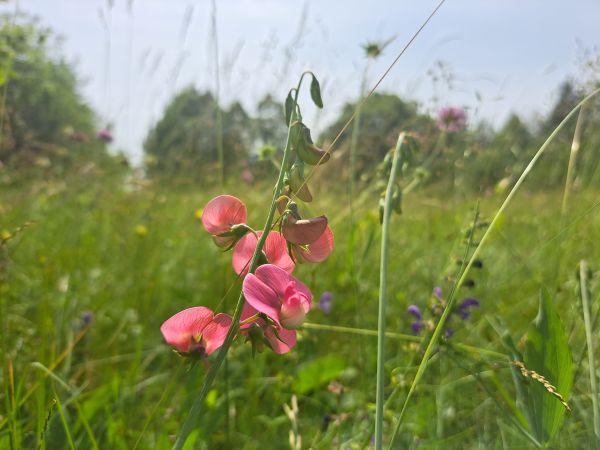
Having ever been on a trip to Čičarija, intermittent lakes of Pivka, Karst, Volovja reber, or one of the karst highlands (Trnovo plateau, Banjšice, Nanos, etc.) in late spring or early summer, an image of remarkably colorful pastures and hayfields has likely stuck with you. If you decided to count all the plant species in a singular meadow, you could come up with a number around 100!
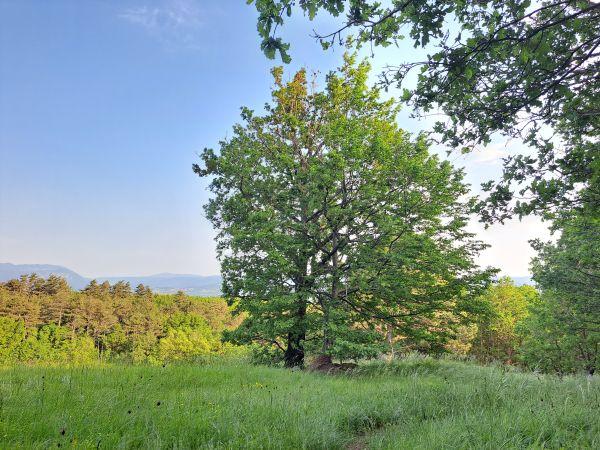
A brome meadow on the hillside of Mala gora is lush with carnations (Dianthus sanguineus).
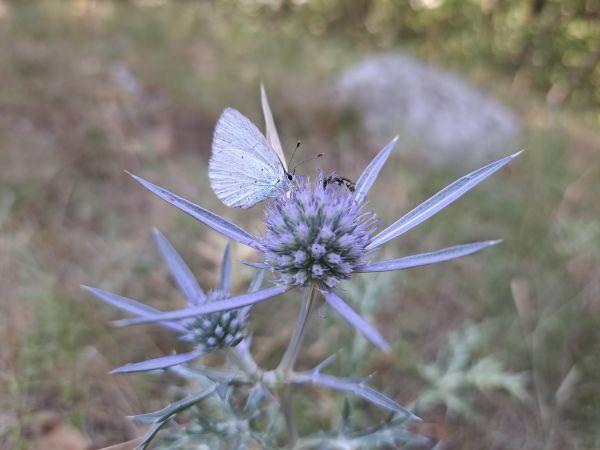
The plant diversity is matched with species richness of several arthropod orders: (especially on sunny days) you will encounter with a plethora of different beetles, true bugs, net-winged insects and butterflies.
The photograph depicts a holly blue (Celastrina argolius) sitting on a amethyst sea holly (Eryngium amethystinum).
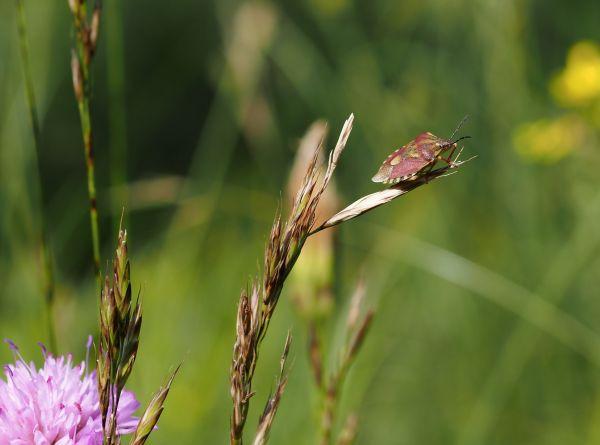
A shield bug (Carpocoris pudicus) resting on an upright brome (Bromus erectus).
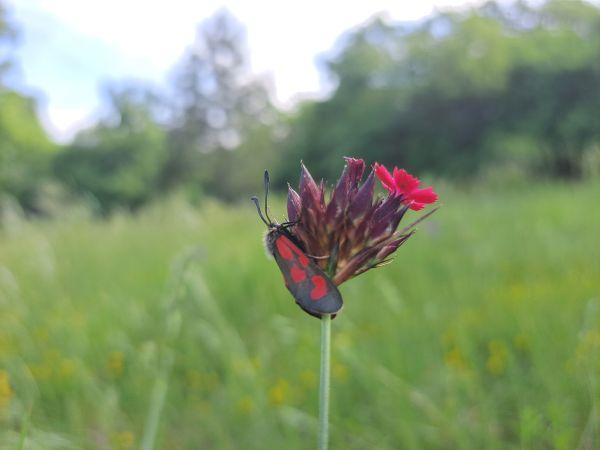
A slender Scotch burnet (Zygaena loti) on a carnation (Dianthus sanguineus).
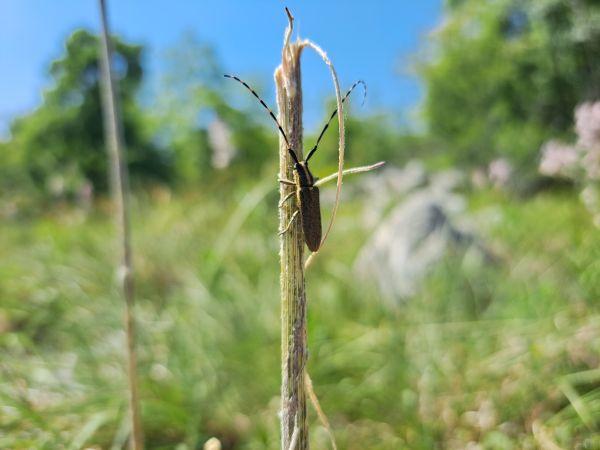
A longicorn, probably a golden-bloomed grey longhorn beetle (Agapanthia villosoviridescens).
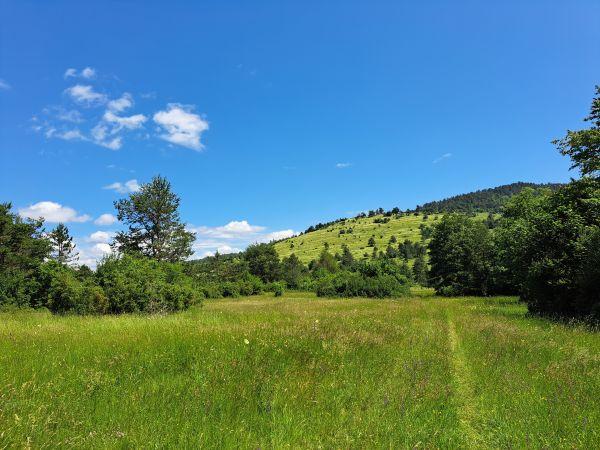
Such biodiverse grasslands are, in fact, the most widespread type of meadows in Slovenia. The vegetation found here forms the floristic association of dwarf sedge and rock knapweed (Carici-Centaureetum rupestris), characteristic of pastures: since the soil layer is shallow and rocky, these areas are mostly unsuitable for mowing.
In the back of the photograph, there are some pastures that are still in use today on mt. Sveta trojica above the Petelinje lake.
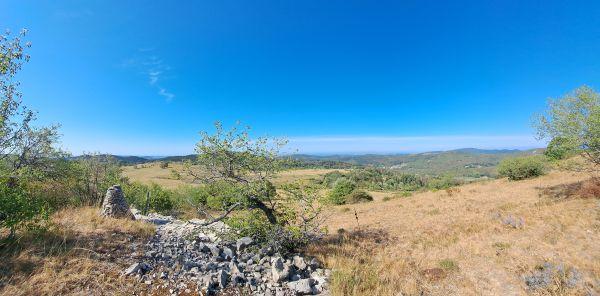
Banjšice are also covered with active pastures.
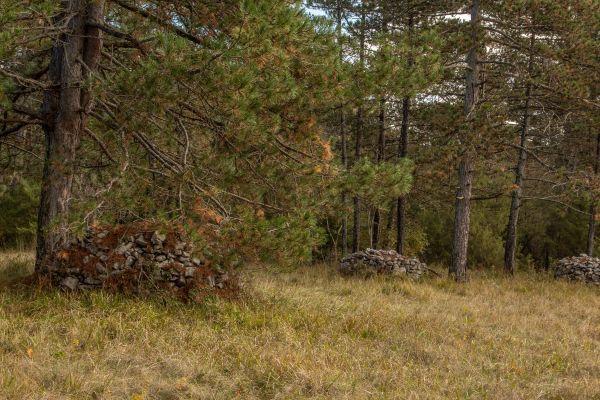
Even though a large percentage of karst pastures have been abandoned, the landscape remains interwoven with dry-stone walls, which delineate former pastures.
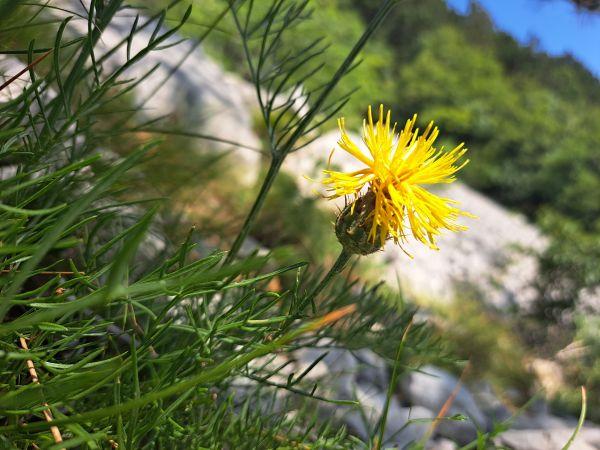
(Former) pasture vegetation is comprised of helio- and thermophilous species, mainly perennials. High percentage of the latter tells us that grazing pressure here was never heavy: compared with annuals, the perennials are less resistant to disturbance. They bloom in abundance before the ground dries out in the heat of midsummer. An early peak of flowering season is also an adaptation to grazing, so that the plants are not munched before their fruits ripen and are dispersed.
The flower in the picture is rock knapweed (Centaurea rupestris).
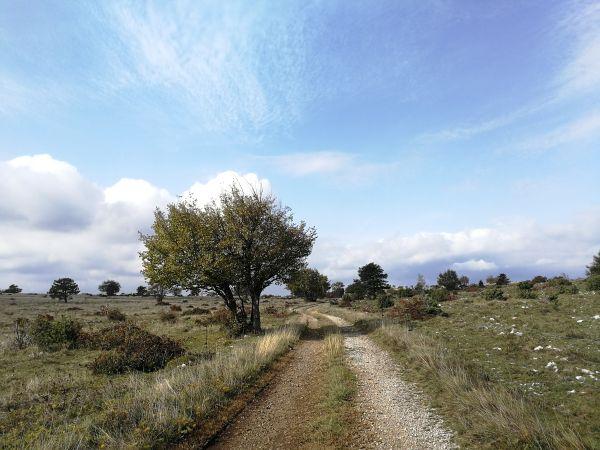
Due to being abandoned, many of these grasslands floristically already resemble the associations of forest edges – good indicators of the change are different umbellifers, the burning bush, meadow rues, the common peony and the bloody crane's-bill. Coupled with a bush of European smoketree or common juniper here and there, and a sprinkle of tiny saplings, the presence of these species suggests a succession towards a deciduous scrubland or juniper woodland, subsequently followed by a formation of pioneer forest.
In the photograph taken in Petrinje karst, several shrubs of both smoketree and juniper are visible.
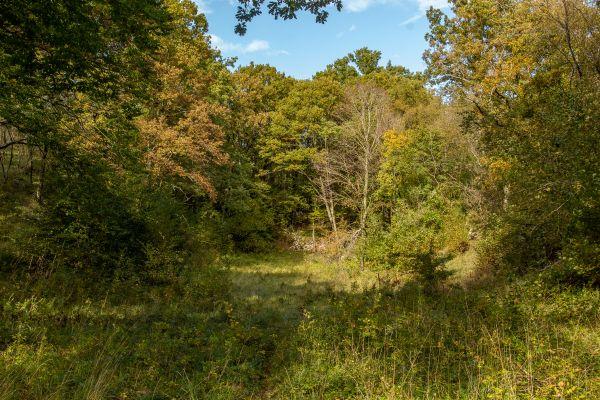
But while the pastures in the previous picture are still in use, here is an example of an abandoned meadow in the vicinity of Dolnje Ležeče, which has been almost entirely encroached by forest.
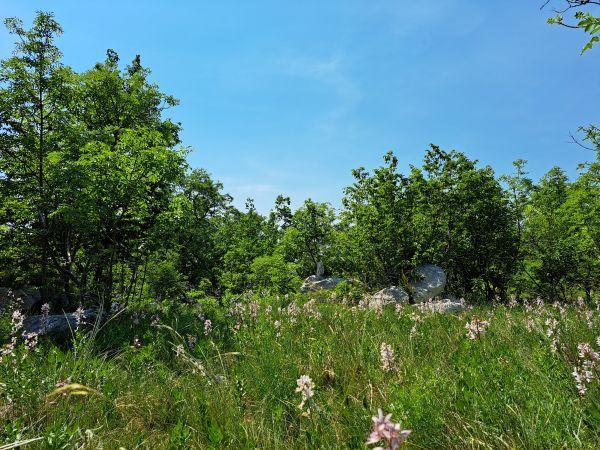
An overgrowth of burning bush (Dictamnus albus) in an area rich with feathered grass (Stipa eriocaulis) in Sežana karst.
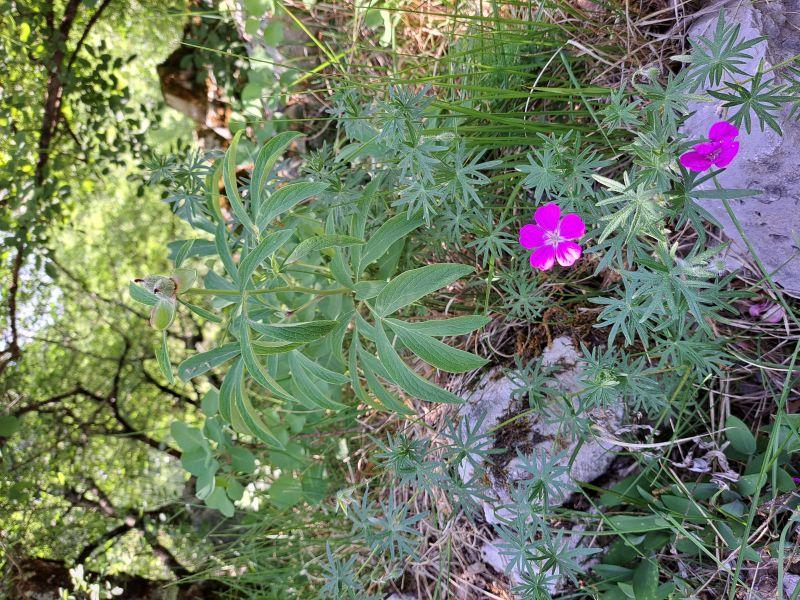
A fruiting common peony (Paeonia officinalis), accompanied by a flowering bloody crane's-bill (Geranium sanguineum) in Sežana karst.
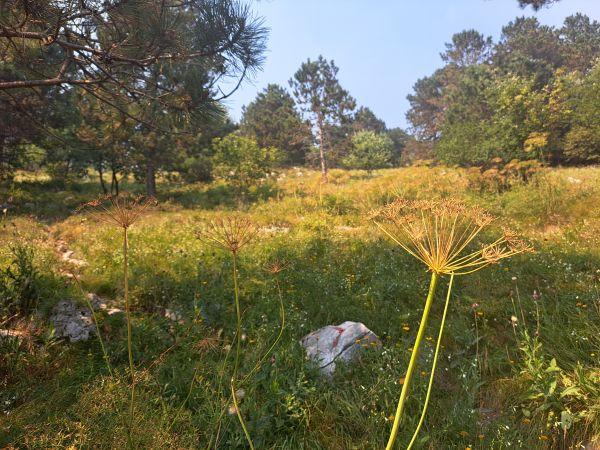
A grassland on Čaven with an overgrowth of laserworth (Laserpitium siler), a species of umbellifer.
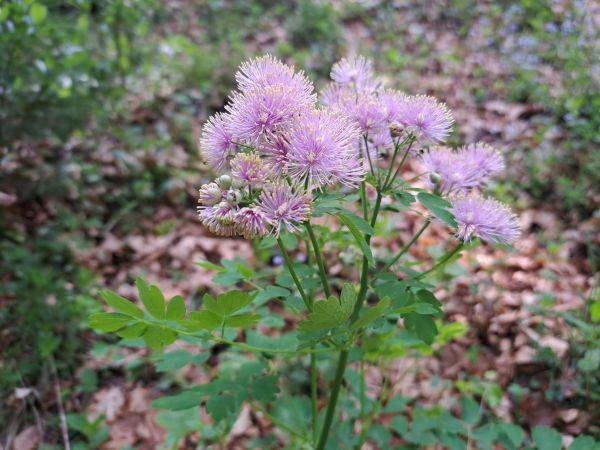
The greater meadow-rue (Thalictrum aquilegiifolium) on Mala gora.
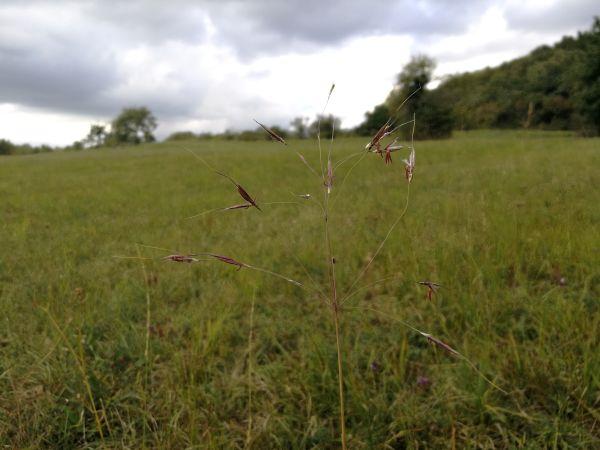
Tall herbs and woody plants often first appear in unmown doline where the soil layer is thicker and contains more moist. Due to this difference in abiotic factors, vegetation in doline differs from that in the surrounding grassland, and forms a mildly acidophilic association Danthonio alpinae-Scorzoneretum villosae. Since the ground in karst depressions is not rocky (or the farmers have cleared them of rocks a century or more ago), these meadows are traditionally used as hayfields and are (or used to be) mown once to twice a year and are (were) not fertilized – the latter can explain why a great diversity of orchids can still be found there.
The photograph depicts a false beardgrass (Chrysopogon gryllus), a characteristic species of Danthonio alpinae-Scorzoneretum villosae, in a hayfield near Beka.
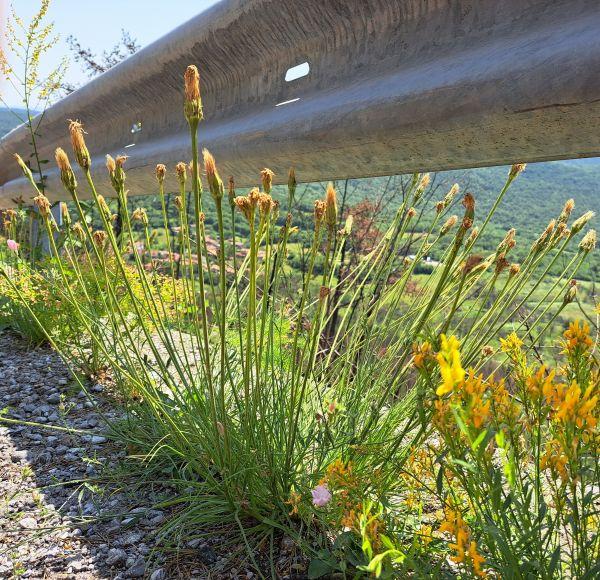
Another characteristic species of the forementioned plant association (and also its denominator) is villous viper's grass (Scorzonera villosa). Its leaves are curiously narrow for a plant that belongs to the same family as dandelion (Cichoriaceae) – so, judging only by the vegetative parts of the plant (e.g. early in the season when the stalks have not yet developed), we could easily missclassify it as a species of grass (Poaceae).
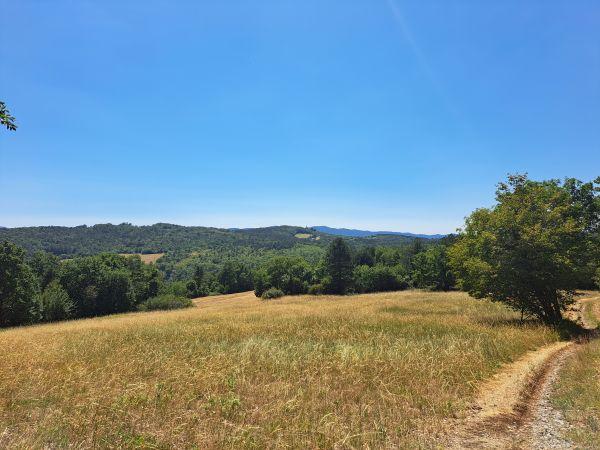
Both of the abovementioned associations belong to the habitat of amphiadriatic dry steppic submediterranean pastures of the Prealpine, Illyrian and Dinaric regions – Scorzoneretalia villosae. The latter is further subsumed under floristic class Festuco-Brometea and, together with similar types of grassland habitats on calcareous soils, represents European biodiversity hotspots.
In the picture is a grassland above the river Raša valley.
Text: Eva Ilič
Foto: Eva Ilič, Nina Lončarević

